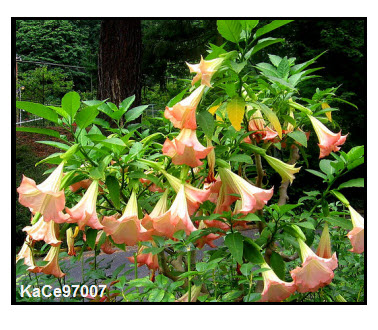 Plant cells are surrounded by rigid walls made of cellulose (plant fiber), but water can still move through these walls to go in and out of plant cells. This movement of water is called osmosis. When water moves into a plant cell, the cell expands, much like a balloon does when inflated. Unlike a balloon, which will burst when inflated with too much gas, plant cells do not burst with too much water. This is because their cell walls limit the amount of water that can move into plant cells. This is due to the pressure of the cell walls which is called turgor pressure.
Plant cells are surrounded by rigid walls made of cellulose (plant fiber), but water can still move through these walls to go in and out of plant cells. This movement of water is called osmosis. When water moves into a plant cell, the cell expands, much like a balloon does when inflated. Unlike a balloon, which will burst when inflated with too much gas, plant cells do not burst with too much water. This is because their cell walls limit the amount of water that can move into plant cells. This is due to the pressure of the cell walls which is called turgor pressure.
When you water the soil of a plant, this water moves from the soil through the plant’s roots, and then into the cells throughout the plant. The turgor pressure of each cell, due to being filled with water, causes the stems and leaves to be ridged. The plant looks healthy.
If you forget to water the plant, water starts to move out of the plant’s cells. The cells dehydrate (lose water–dry out) and the turgor pressure of each cell decreases. This decrease in pressure causes the plant to wilt (droop). If the cells have not completely dehydrated, watering will revive the droopy plants.
DISCOVER FOR YOURSELF
Observe the effects of water loss from plant cells using two stalks of celery. With scissors, cut across the bottom of both stalks. This insures that the xylem (plant tubes that carry water up stems to plant cells)are not closed off.
Stand one of the stalks of celery in an empty glass.
The second stalk of celery will stand in colored water. Prepare this glass by filling it about half-full with tap water. Add enough food coloring to the water to turn it a dark blue. Stand the celery in the colored water.
Allow the two glasses to stand undisturbed overnight. You want to decide how water as well as the lack of water affects the celery stalk. NOTE: Make a drawing or take a picture of the two celery stalks at the beginning and at the end of the experiment. You can compare the pictures to make more accu rate observations about how the two stalks change.
rate observations about how the two stalks change. 
WHAT HAPPENS?
The celery in the empty glass wilts.
The celery in the blue water not only has not wilted but its leaves look blue-green. This happens because the blue water moved through the xylem tubes to the leaves.
RESOURCE BOOKS

